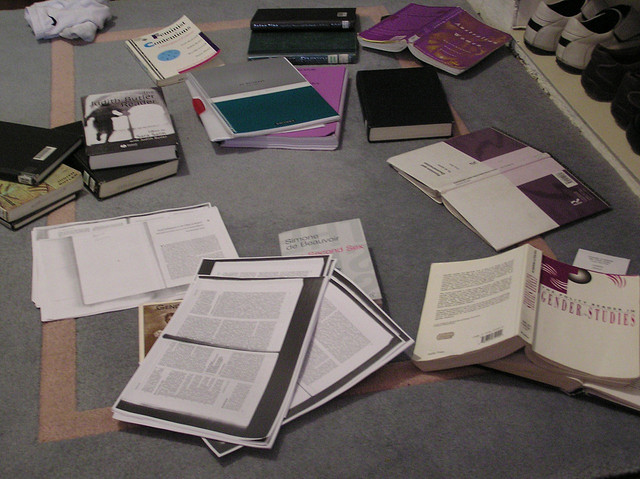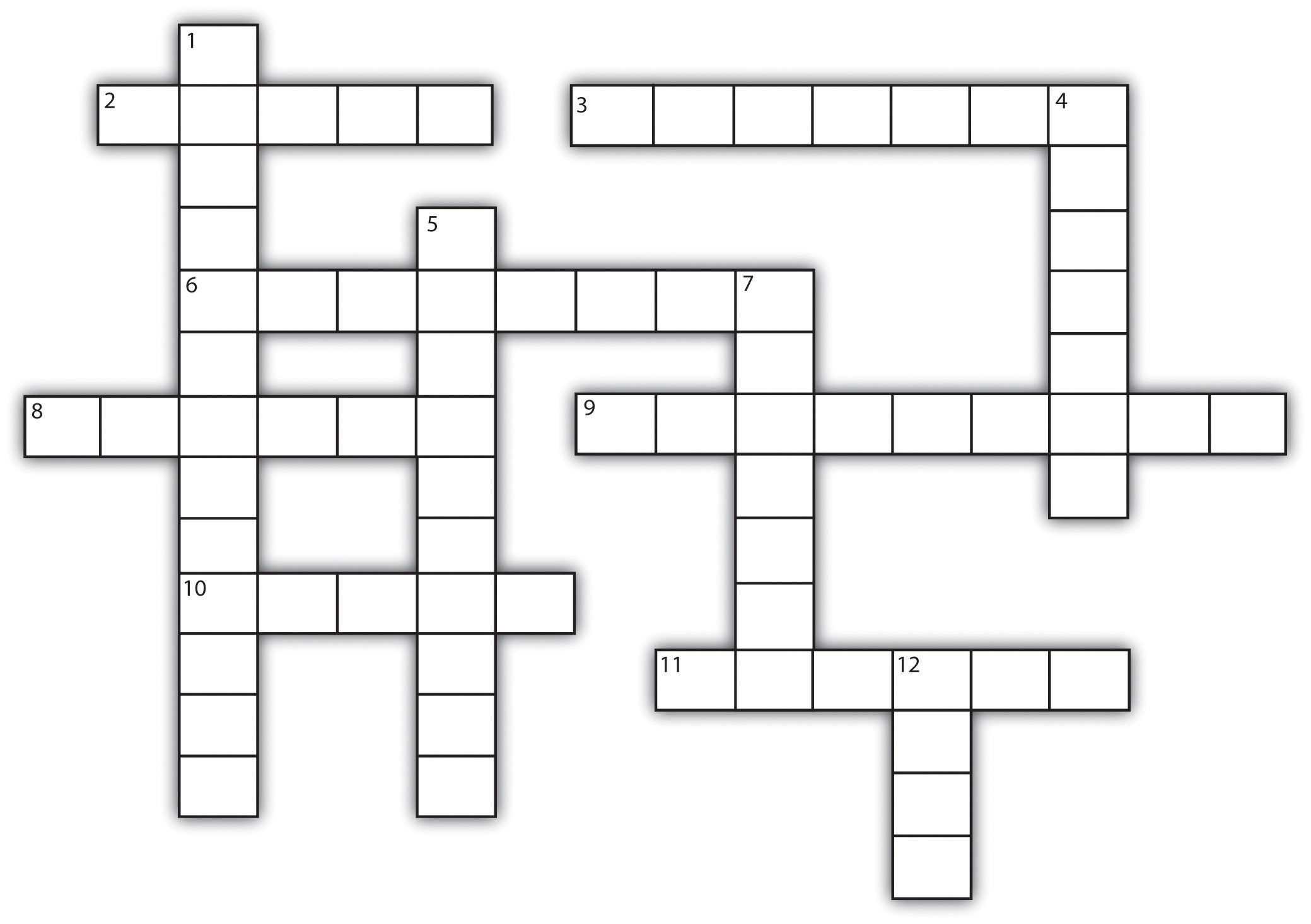Chapter 6: Preparing for and Taking Tests
6.4 The Secrets of the Q and A’s
Learning Objectives
- Understand the five principal types of questions.
- Gain specific strategies for addressing each type of question.
You can gain even more confidence in your test-taking abilities by understanding the different kinds of questions an instructor may ask and applying the following proven strategies for answering them. Most instructors will likely use various conventional types of questions. Here are some tips for handling the most common types.
Multiple-Choice Questions
- Read the instructions carefully to determine if there may be more than one right answer. If there are multiple right answers, does the instructor expect you to choose just one, or do you need to mark all correct options?
- Read each question carefully and try to answer it in your head before reading the answer options. Then consider all the options. Eliminate first the options that are clearly incorrect. Compare the remaining answers with your own answer before choosing one and marking your paper.
- Look for clue words that hint that certain option answers might be correct or incorrect. Absolute words like “never,” “always,” “every,” or “none” are rarely found in a correct option. Less absolute words like “usually,” “often,” or “rarely” are regularly found in correct options.
- Be on the lookout for the word “not” in the stem phrase and in the answer choice options; it is an easy word to miss if you are reading too quickly, but it completely changes the meaning of the possible statements.
True-or-False Questions
- Most of the tips for multiple-choice questions apply here as well. Be particularly aware of the words “never,” “always,” “every,” “none,” and “not” because they can determine the correct answer.
- Answer the questions that are obvious to you first. Then go back to statements that require more thought.
- If the question is stated in the positive, restate it to yourself in the negative by adding the word “not” or “never.” Does the new statement sound truer or more false?
- If you still are unsure whether a statement is true or false and must guess, choose “true” because most tests include more true statements than false (but don’t guess if a wrong answer penalizes you more than one left blank).
Matching Columns
- Start by looking at the two columns to be matched. Is there an equal number of items in both columns? If they are not equal, do you have to match some items in the shorter column to two or more items in the longer column, or can you leave some items unmatched? Read the directions to be sure.
- If one column has a series of single words to be matched to phrases in the other column, read all the phrases first, then all the single words before trying to make any matches. Now go back and read each phrase and find the word that best suits the phrase.
- If both columns have single words to be matched, look to cut down the number of potential matches by grouping them by parts of speech (nouns with nouns, verbs with verbs, etc.).
- As always, start by making the matches that are obvious to you, and then work on the ones that require more thought. Mark off all items you have already used so you can easily see which words or phrases still remain to be matched.
Short Answer Questions

Tim Riley – Essay time (Postmodern Feminism): My Floor – CC BY-NC-ND 2.0.
- Short answer questions are designed for you to recall and provide some very specific information (unlike essay questions, which also ask you to apply critical thinking to that information). When you read the question, ask yourself what exactly the instructor wants to know. Keep your answers short and specific.
Essay Questions
- Essay questions are used by instructors to evaluate your thinking and reasoning applied to the material covered in a course. Good essay answers are based on your thoughts, supported by examples from classes and reading assignments.
- Careful planning is critical to answering essay questions effectively. Note how many essay questions you have to answer and how difficult each question seems. Then allocate your time accordingly.
- Read the question carefully and underline or circle keywords. Watch for words that describe the instructor’s expectations for your response (see Table 6.1 “Words to Watch for in Essay Questions”).
- If time allows, organize your thoughts by creating a quick outline for your essay. This helps ensure that you don’t leave out key points, and if you run out of time, it may pick up a few points for your grade. Jot down specific information you might want to use, such as names, dates, and places. Chapter 8 “Writing for Classes” discusses outlining and other aspects of the writing process in more detail.
- Introduce your essay answer, but get right to the point. Remember that the instructor will be grading dozens of papers and avoid “filler” text that does not add value to your answer. For example, rather than writing, “In our study of the Civil War, it is helpful to consider the many facets that lead to conflict, especially the economic factors that help explain this important turning point in our nation’s history,” write a more direct and concise statement like this: “Economic factors help explain the start of the Civil War.”
- Write neatly and watch your grammar and spelling. Allow time to proofread your essay. You want your instructor to want to read your essay, not dread it. Remember that grading essays is largely subjective, and a favorable impression can lead to more favorable grading.
- Be sure to answer all parts of the question. Essay questions often have more than one part. Remember, too, that essay questions often have multiple acceptable answers.
Table 6.1 Words to Watch for in Essay Questions
| Word | What It Means | What the Instructor Is Looking For |
|---|---|---|
| Analyze | Break concept into key parts | Don’t just list the parts; show how they work together and illustrate any patterns. |
| Compare | Show similarities (and sometimes differences) between two or more concepts or ideas | Define the similarities and clearly describe how the items or ideas are similar. Do these similarities lead to similar results or effects? Note that this word is often combined with “contrast.” If so, make sure you do both. |
| Contrast | Show differences between two or more concepts or ideas | Define the differences and clearly describe how the items or ideas are different. How do these differences result in different outcomes? Note that this word is often combined with “compare.” If so, make sure you do both. |
| Critique | Judge and analyze | Explain what is wrong—and right—about a concept. Include your own judgments, supported by evidence and quotes from experts that support your point of view. |
| Define | Describe the meaning of a word, phrase, or concept | Define the concept or idea as your instructor did in class—but use your own words. If your definition differs from what the instructor presented, support your difference with evidence. Keep this essay short. Examples can help illustrate a definition, but remember that examples alone are not a definition. |
| Discuss | Explain or review | Define the key questions around the issue to be discussed and then answer them. Another approach is to define pros and cons on the issue and compare and contrast them. In either case, explore all relevant data and information. |
| Explain | Clarify, give reasons for something | Clarity is key for these questions. Outline your thoughts carefully. Proofread, edit, proofread, and proofread again! Good explanations are often lost in too many words. |
| Illustrate | Offer examples | Use examples from class material or reading assignments. Compare and contrast them to other examples you might come up with from additional reading or real life. |
| Prove | Provide evidence and arguments that something is true | Instructors who include this prompt in an exam question have often proven the hypothesis or other concepts in their class lectures. Think about the kind of evidence the instructor used and apply similar types of processes and data. |
| Summarize | Give a brief, precise description of an idea or concept | Keep it short, but cover all key points. This is one essay prompt where examples should not be included unless the instructions specifically ask for them. (For example, “Summarize the steps of the learning cycle and give examples of the main strategies you should apply in each one.”) |
Checkpoint Exercise
Test your test knowledge.
| Across | Down |
|---|---|
| 2. “Always,” “never,” and “every” are words that usually indicate the answer is ___________. | 1. It helps to group words in matching columns by ___________________ ___ _______________. |
| 3. A way to organize your thoughts for an essay | 4. Clarify, give reasons for something |
| 6. Short answer questions require a __________ answer. | 5. Essay questions often have more than one ________ answer. |
| 8. Describe the meaning of a word | 7. Show similarities and differences |
| 9. Give a brief, precise description of an idea or concept | 12. Most common answer in true and false questions |
| 10. Type of question used to evaluate thinking and reasoning | |
| 11. Since instructors need to read many essays, it is important to write _________. |


